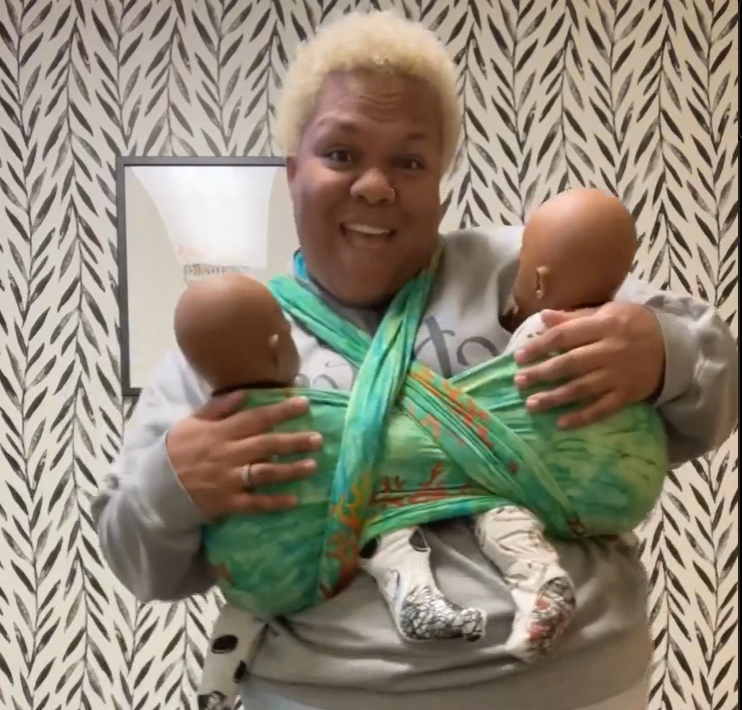
Yes, you can baby wear if you’re not Black.
 Black Babywearing Week is upon us and I wanted to write a blog about a much heated topic of cultural appropriation. I know that the default when we hear this term can be defensiveness or guilt, but I want to help you through those feelings. I also know that you may be confused as to why I’m even talking about this subject. Being an educator for 7 years and talking with many different groups of folks, I’m asked fairly often if folks that aren’t of the global majority can babywear. So, let’s dive in.
Black Babywearing Week is upon us and I wanted to write a blog about a much heated topic of cultural appropriation. I know that the default when we hear this term can be defensiveness or guilt, but I want to help you through those feelings. I also know that you may be confused as to why I’m even talking about this subject. Being an educator for 7 years and talking with many different groups of folks, I’m asked fairly often if folks that aren’t of the global majority can babywear. So, let’s dive in.
Let’s start by researching the term. A simple Google search will get you loads of definitions, but the Oxford definition is what we will use. Their definition is: “the unacknowledged or inappropriate adoption of the customs, practices, ideas, etc. of one people or society by members of another and typically more dominant people or society”. The keywords here are “unacknowledged” and “inappropriate”. A lot of the time, when cultural practices are adopted by a group of folks, they fail to acknowledge where they learned the practice from. When I’m educating folks on cultural appropriation in the form of babywearing, the biggest advice I give is to make sure they know where the practice is from and why they’re using it.
Using most carriers, in general, is not a cultural practice (notice that I said “most” and we’ll visit that later). A lot of the time it’s the fabrics folks use that is the cultural appropriation.
In Africa, there are different designs of fabric that are used to back babies (the term used in Africa to babywear). Some designs hold cultural significance for the region of Africa they’re from. If you’re not from that region or from Africa and you’re using a carrier with those fabrics, it can certainly look like cultural appropriation. Some of the time these fabrics can be gifted to folks from Africa and that’s okay because you were invited into their culture, but to go and grab it without knowing the significance, that is an issue.
View this post on Instagram
Another instance we can look at is actual carriers. There are some carriers in Asia that are culturally significant. It wouldn’t be right for me to use them as a Black person unless I was invited by someone of the culture to use the carrier or gifted the carrier. I would have the knowledge of the carrier and the culture to be able to continue to inform people of where I received this gift and the history behind it. This is also true for Indigenous carriers like Cradleboard. It’s not a part of my culture, so I wouldn’t use it.
Your run of the mill carrier like a soft structured carrier, a ring sling, a stretchy, etc…are all fair game especially if they’re in a print or color that doesn’t have any cultural significance, unless it’s a company that’s owned by a person of that culture. This sometimes takes some sleuthing because there are companies out there who have and do use cultural patterns that aren’t theirs. It looks beautiful and I know the pull to use them, but we need to do our research. The right thing to do is make sure we’re not using practices or items that don’t belong to us.
I tell folks all the time that I’m not telling them what to do; I’m giving them education. They can either take it or leave it. However, if you’re approached by someone and they ask you why you’re using a cultural item, you better be prepared to explain yourself.
As we approach Black Babywearing Week, I want you to know that you can babywear if you’re not Black, but please let us have this week. Celebrate us, share our stories, and share our passion for attachment parenting just like the rest of the world. It’s not a time to make this week about yourself or take our designs and practices for yourself without acknowledging where you got it from and the cultural significance behind it.



